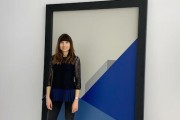
A Designer in Italy: Highlights from Milan Design Week
by Natalia Lerman | Mark English Architects, Work/News
In early April I crossed the Atlantic to attend this year’s annual Design Week in Milan. It didn’t take much convincing when I first shared the idea with Mark.
In early April I crossed the Atlantic to attend this year’s annual Design Week in Milan, Italy. It didn’t take much convincing when I first shared the idea with Mark — he immediately recognized the trip’s potential to inspire the team and replenish our materials library with Europe’s finds.
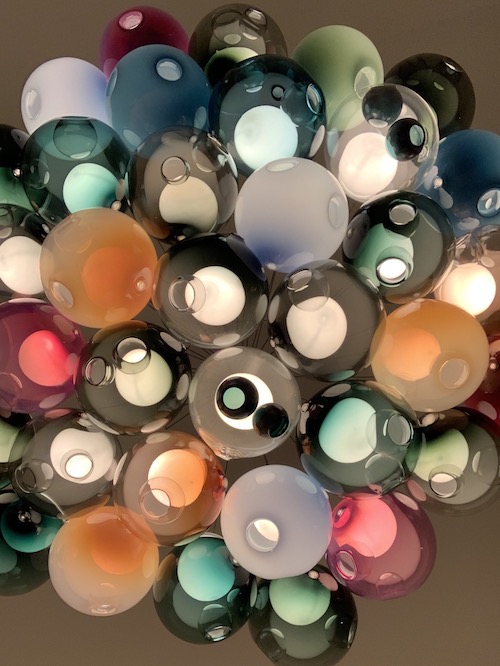
Bocci Cluster Pendant Light with Multi-color Hand-blown Globes
I was joined by my architect friend Masha. As it was our first time at Milan Design Week, we spent the entire time in absolute delight and rapture at what was happening all around us. And yet, almost a week of exploring for 12+ hours per day until we literally couldn’t walk was not nearly enough see it all.
Before moving to California, I regularly visited Saloni World Wide, which has come to Moscow every year since 2005. But this did not prepare me for the epic scale of the Milan Design week!
When I returned to San Francisco – equal parts exhausted and inspired – I couldn’t wait to share all that I had seen with my colleagues. After having completed four presentations to the team, I’m finally ready to share my highlights with you!
Milan Design Week and Fiera Milano
Once a year during design week, nearly the entire city of Milan is transformed: literally hundreds of showrooms, exhibitions and installations open their doors to international guests. The largest number of events take place in the famous Brera Design District, which is not only the creative and cultural center of Milan, but also an international design showcase and reference point for designers worldwide.
The biggest and the most famous event at Design Week (and largest international world-wide furniture fair) is always Salone del Mobile. And this year was one of the most ambitious in the history of the exhibition. The 58th exhibition was held at Fiera Milano in Rho – an impressive contemporary venue – the creation of Massimiliano & Doriana Fuksas.
The entire exhibition complex consists of 8 large buildings housing the exhibition spaces, as well as smaller buildings with everything from snack kiosks, shops and pavilions to hotels, offices and exposition spaces. All of these spaces are stacked on either side of the main pedestrian alley bisecting the venue and accessible by escalator.
The central thoroughfare and all adjoining buildings are canopied in a lattice shell consisting of glass panels. Circular steel beams that mimic tree trunks and accommodate roof drainage. Standing inside, I was struck in awe at how the architects managed to create a space that at once feels modern, technological and grand, yet somehow organic and intimate.

Entrance area

Main pedestrian alleyway

View one of the cafes from main pedestrian alleyway

View from the lower level

View from one of the pavillions
Design trends, just as the concept of beauty, are always subjective and often inspired by fashion, environment and time. Many of them come and go, but there are the few that somehow remain relevant, regardless of epoch and lifestyle. These rare designs owe their longevity to masters who have continued to develop their method and refine their craft over decades, and even generations. Such timeless designs transform along with the ever-changing world, reflecting the past while openly looking towards the future. This year’s design week once again showed that innovations in lighting, thoughtful use of natural materials and experimental design.
Salone del Mobile is held every year together, with Euroluce in odd years and EuroCucina (along with the International Bathroom Exhibition) in even years. This year Euroluce took center stage with 4 pavilions showcasing new lighting products and ideas, with a particular focus on recycled and low environmental impact materials.
To find yourself among Bocci lighting is to be in a magical world filled with stunning luminous sculptures. The company seamlessly combines unique design and state-of-the-art technology – plus a touch of the unexpected – in artfully-designed products.
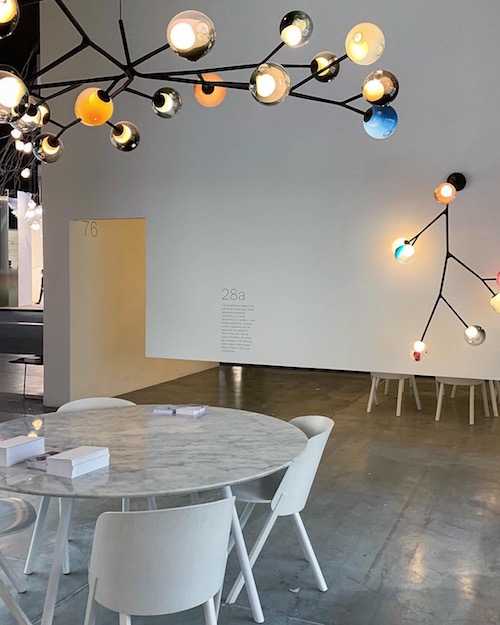
28 Series with stainless steel armature system in black matte finish

73 Series installation

28 Series with copper cables and pendants in a mix of color

16 Series trees
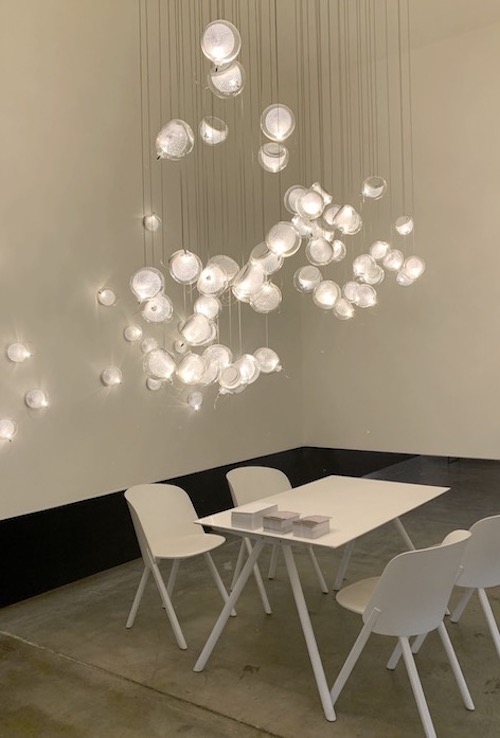
76 Series made from blown glass and copper mesh
When looking at the Vibia pavilion, it seems that the designers were inspired by the theme of simple geometry. Perhaps they wanted to subtly illustrate how simple, minimal light can boldly illuminate space.
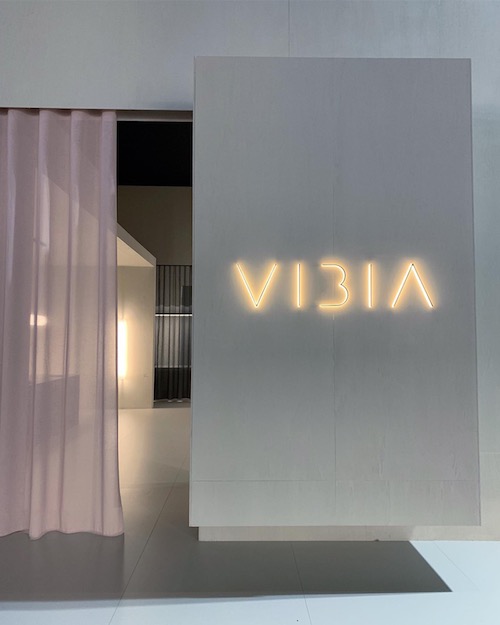
Entry to the pavilion
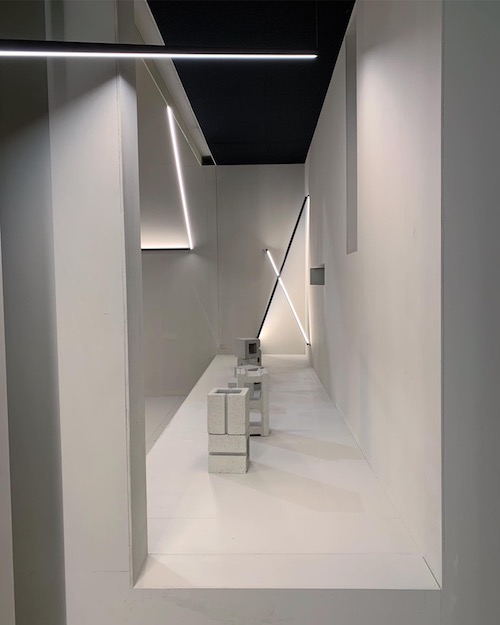
Sticks by designer Arik Levy
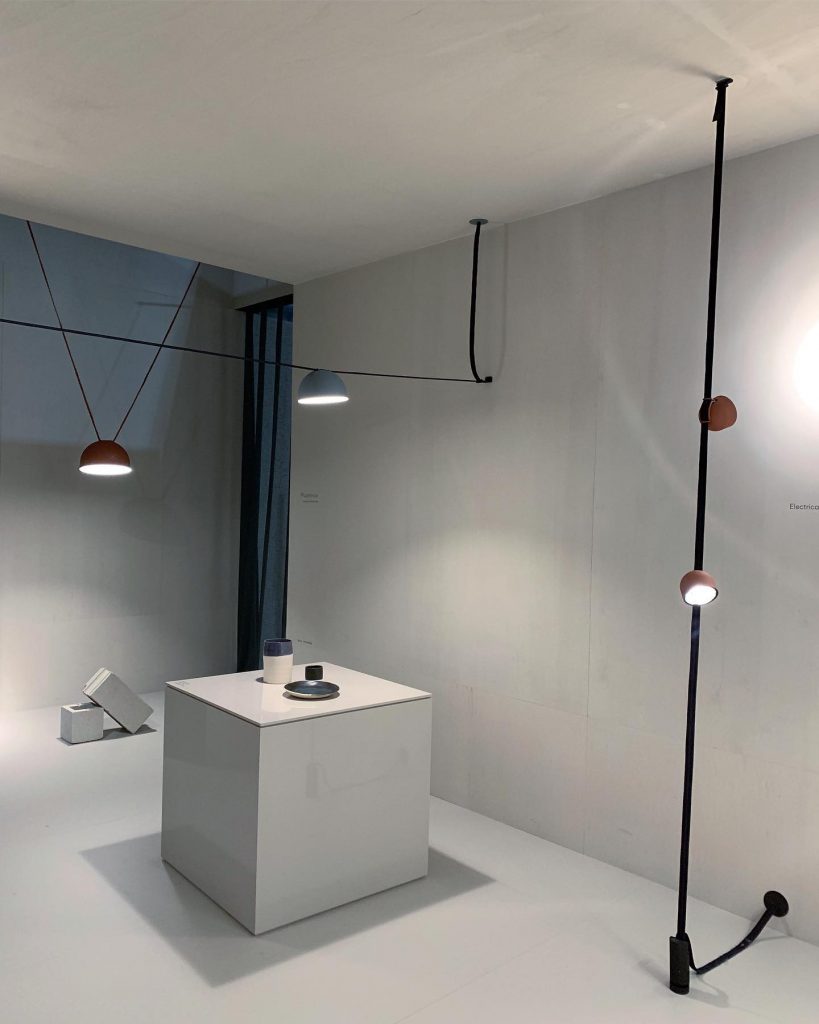
Plusminus by German industrial designer Stefan Diez

Palma pendants
Louis Poulsen
Established in 1874, Danish company Louis Poulsen had some of their best lighting on display, from iconic models to new developments. One might ask, “what’s so special about a lighting company established over 145 years ago?” Walking along the curved walls of the pavilion, the answer becomes obvious. When it comes to lighting, it takes both skill and a deep understanding of the craft to create products that makes you admire the design, and at the same time feel comfortable and delight in the atmosphere it creates. The classic PH5 pendant, which this year was presented in new colorful finishes, undoubtedly reflects the philosophy of the company: function, ambience and comfort.
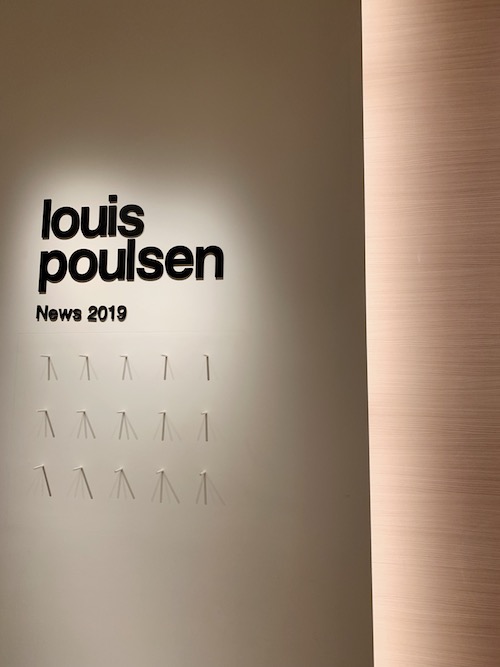
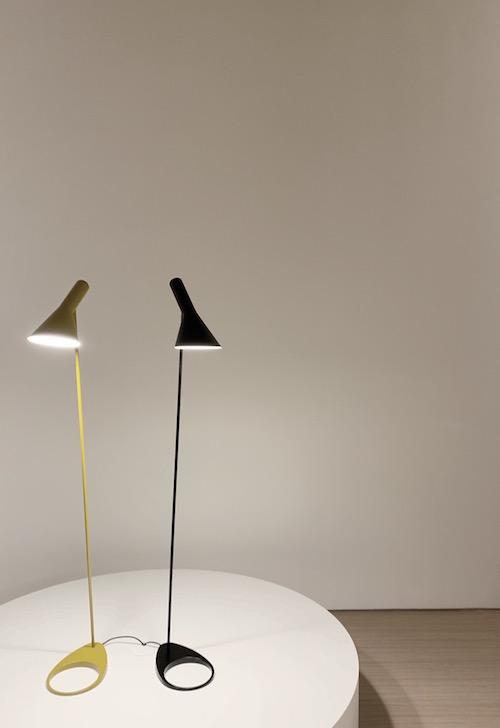
AJ floor lamp
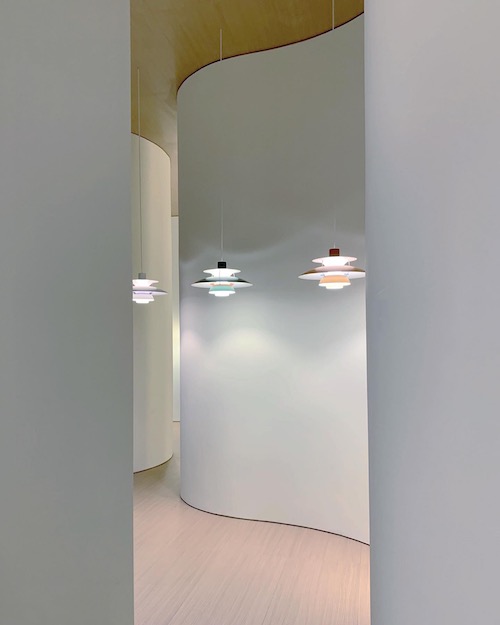
Colorful PH5 pendants
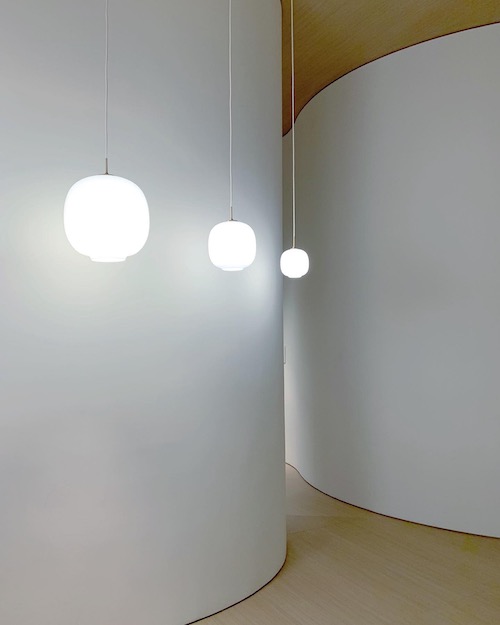
Radiohus pendants by Vilhelm Lauritzen
Kinetura
My new lighting discovery is a Belgian lighting studio Kinetura, which specializes in metamorphic lighting objects that combine modulation with physical transformation. The company first presented their metamorphic lights at Euroluce in 2015. Tokyo is probably my favorite model. When the fixture is in the closed position, all that you see is a thin circular line. When the light turns on the circle slowly retreats inside to reveal the light. Tokyo can be seamlessly integrated into walls or ceilings, or used to create a unique composition by combining different sizes.

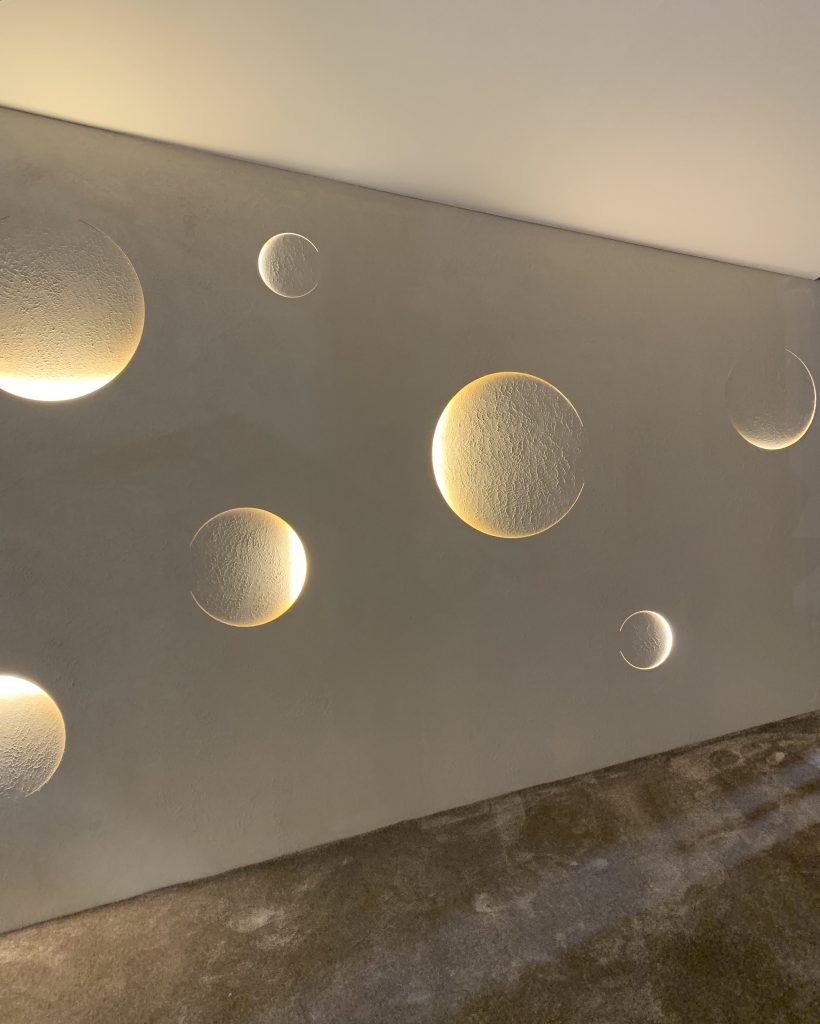
Tokyo lighting composition
Flos
Italian company Flos is recognized as a world-leading lighting company. With their tracking magnet, Michael Anastassiades’ Coordinates system and new WireLine by Formafantasma, Flos masterfully plays with space and boldly questions the very essence of lighting.
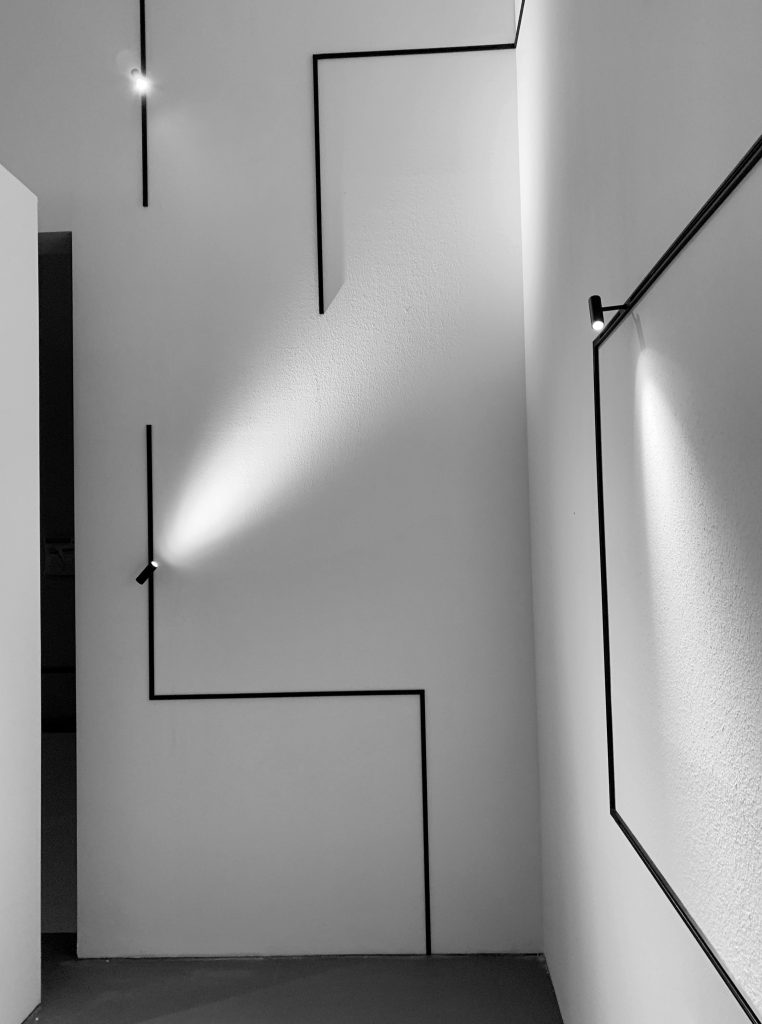
The Tracking magnet system
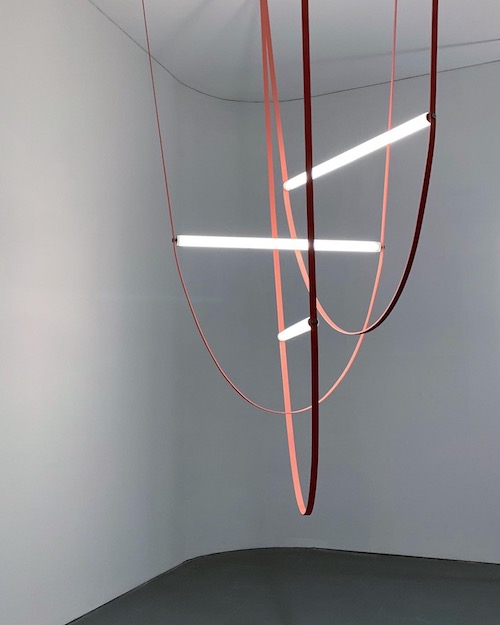
WireLine by Formafantasma
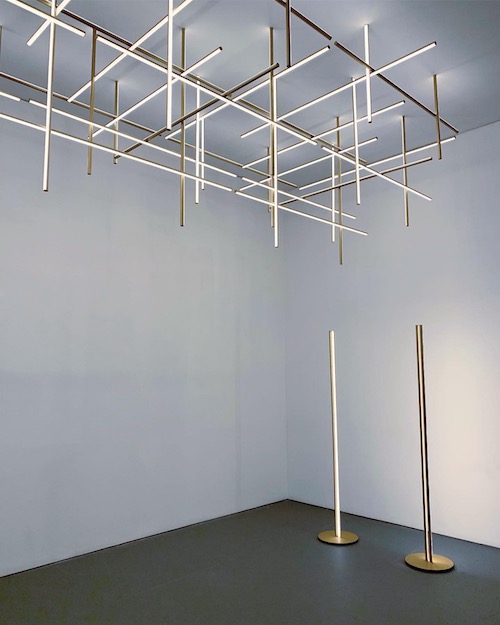
Coordinates System by Michael Anastassiades
Preciosa
“Preciosa lighting brings joy, life and light to Milan” reads the company’s website, and I couldn’t agree more. Carousel of light by Preciosa is an amazing installation, with its rotating “dome” of lights. As you approach, it lights up – and fades away as you do. This installation definitely challenges your conception of what lighting is and could be…

Carousel of Light installation

Pearl Wave made from triplex opal spheres and gold finished metal rods
Studio Italia Design
Studio Italia Design’s installation LETS DANCE fully reflects the emotions that occur when entering the space! Probably hundreds of Jefferson suspended lights (the company’s signature product at Euroluce 2019) create unique experience.

Composition of suspended lights
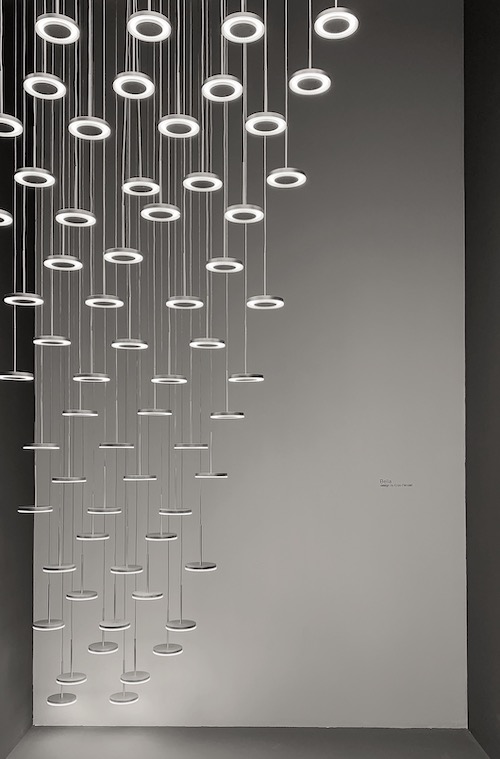
Bella pendant by Enzo Panzeri
Airnova
For more than 25 years, the Airnova has reflected the Italian spirit and love for color. With their liberal use of color, Airnova’s installation at Isaloni conveyed a sense of exuberance, joy and celebration. The photos speak for themselves.

Lagoon pendant light, Nelson cabinet and chairs in leather
Arketipo
Italian company Arketipo works with the best designers, thoughtfully creating their products. At Saloni de Mobile, the simple open form of their pavilion served to contrast the smooth simple curves of furniture, lighting and accessories.
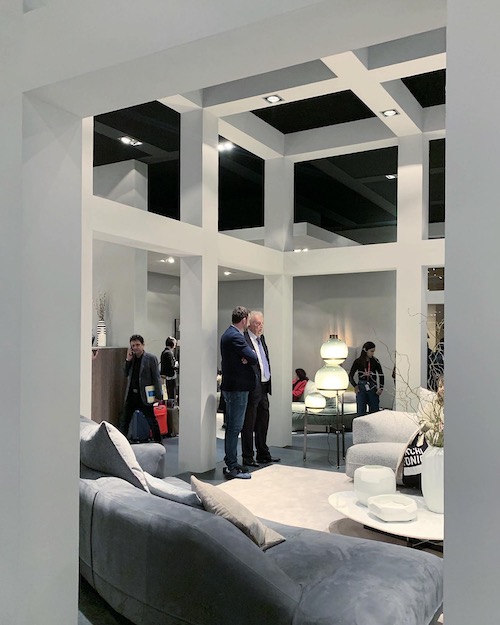
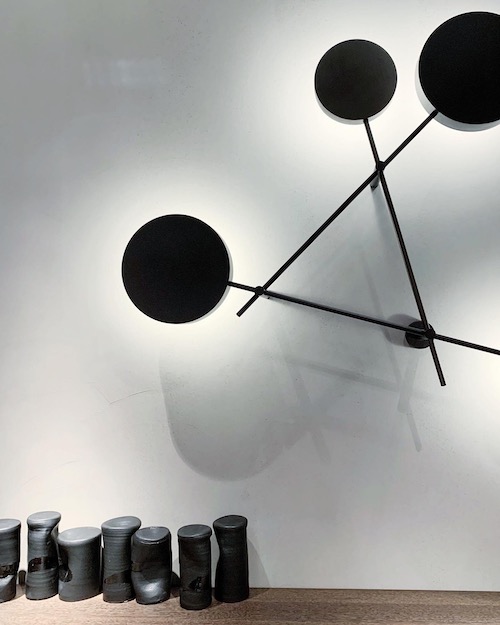
Iride wall light by Bernhardt & Vella
Poliform
Poliform is known for pulling off truly impressive installations on an annual basis at the Salone del Mobile furniture exhibition. The 2019 exhibition space, divided into two main zones, occupied an area of 1,700 square meters and fully immersed you in the world of Poliform. New furniture models, reflecting a mix of research and unique aesthetic vision, revealed themselves within an elegant interior.

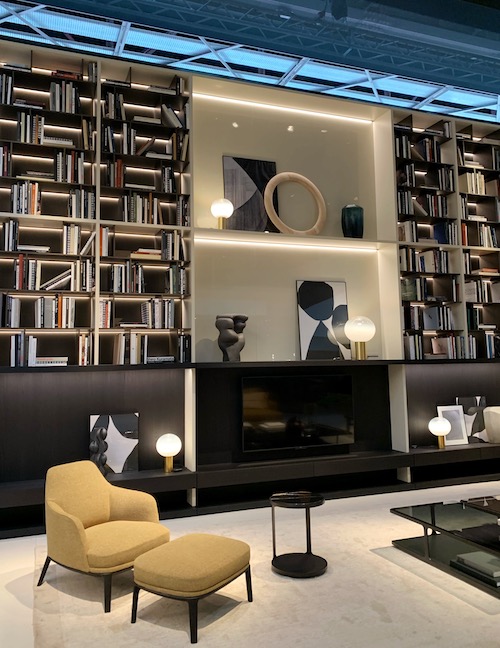
The Gentleman Collection by Marcel Wanders
Agape and Wall & Deco
Both companies Agape and Wall&Deco create unique designs every year attracting the best designers. This year they collaborated at Isaloni with the installation called “Havens.”
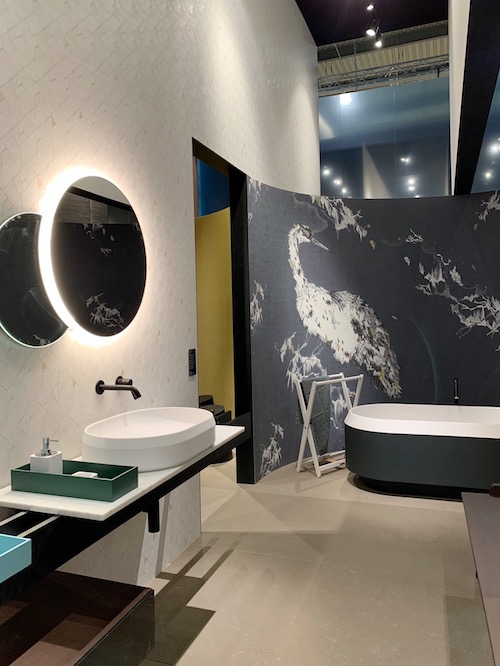
Ardea wallpaper by Elisa Vendramin and Rigo sink system by Patricia Urquiola
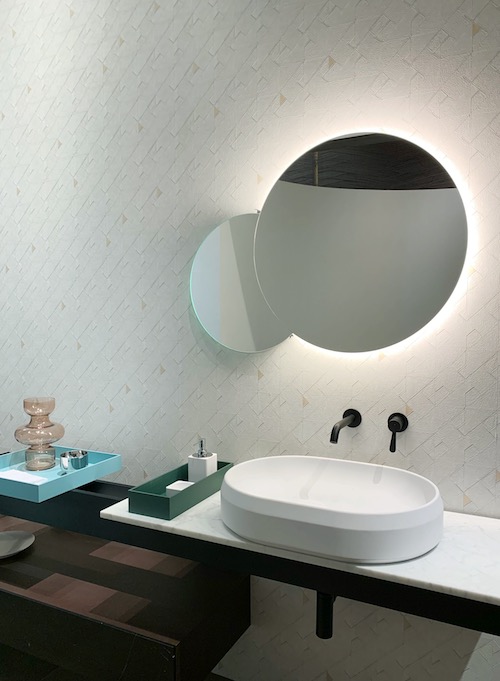
Rigo furniture system by Patricia Urquiola

Nori wallpaper by Studiopepe and Delove wallpaper by María Gómez García
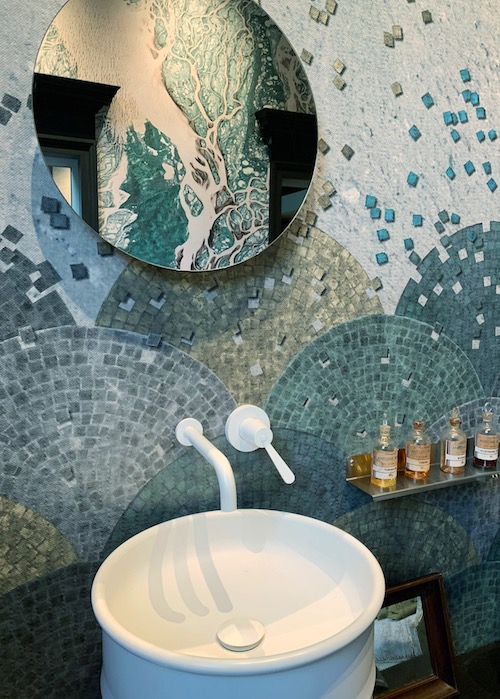
Racine wet system wallpaper by Alhambretto and Am Prod Vieques sink by Patricia Urquiola
Wall & Deco’s Wet System
The wallpaper manufacturer Wall & Deco presented its wallpaper Wet System. The patented wall coverings met visitors with geometric and abstract patterns and beautiful designs. It seems that the company is trying to overcome the limitations imposed by styles and cultures by blurring these boundaries and showing that the real design is limitless and it does not have frames and boundaries (except for our imagination) Agape featured this year with new Rigo system designed by Patricia Urquiola,Ell series and Spoon M by Benedini Associati with Andres Jost and Diego Cisi.
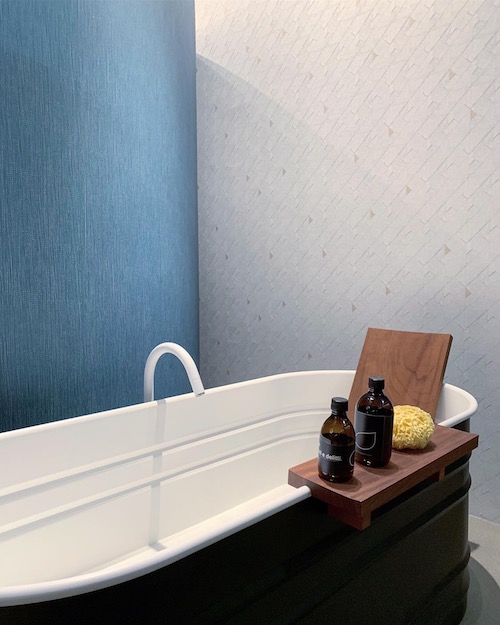
Vieques tub by Patricia Urquiola
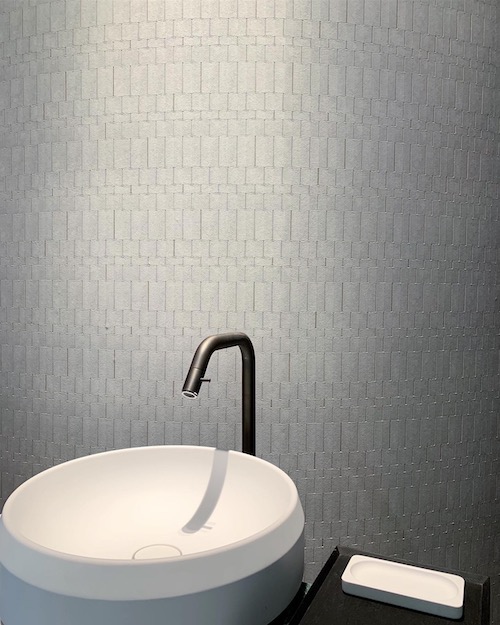
Lariana washbasin by Patricia Urquiola
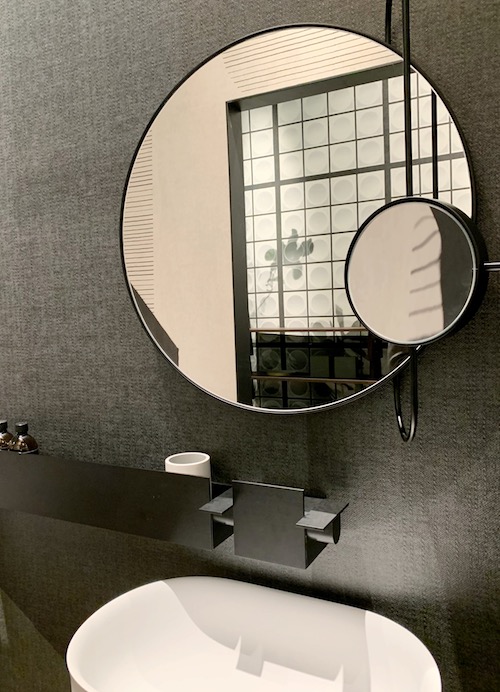
Revolving Moon mirrors
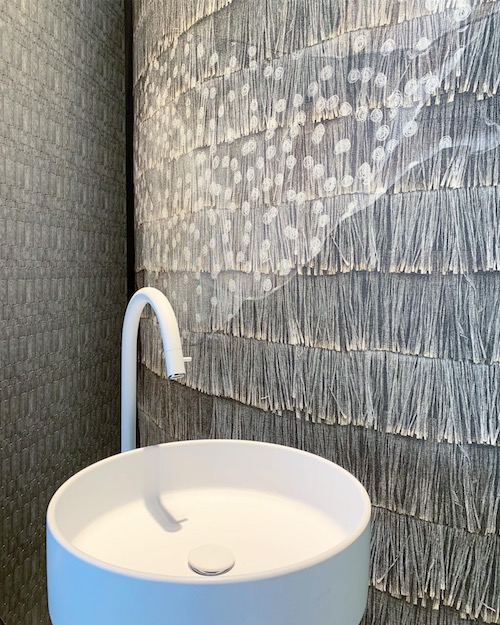
Poid Plum wallpaper by Christian Benini
Agape’s Rigo System
The Rigo system has a strong architectural inspiration and timeless materials such as marble, wood and aluminum make it truly unique. I was so impressed with the design that I did not miss the opportunity to visit Agape in Brera design district.
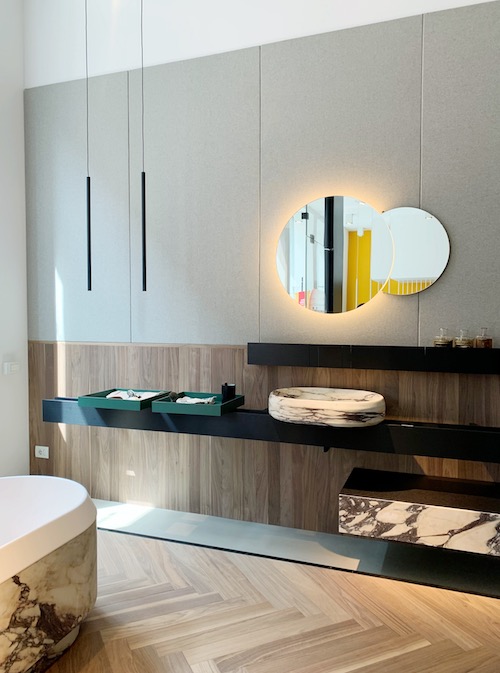
Rigo Marble furniture system by Patricia Urquiola
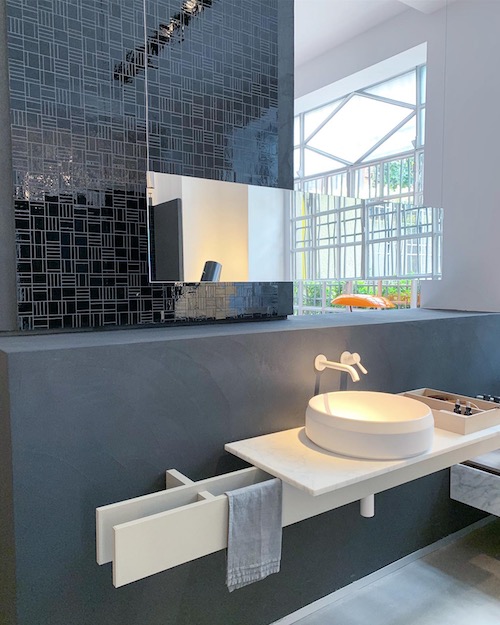
Rigo furniture system by Patricia Urquiola

Washbasin by Diego Vencato and Gypsum

Immersion bathtub
Antoniolupi
Antoniolupi is a company based in Tuscany that has been known for designer bath furniture for more than 65 years. I’ve always been fascinated by their brave designs and how they are able to rethink the use of traditional materials in combination with innovative new materials, so I visited both of their main exhibition spaces at Isaloni and near Brera. I’ll start with the space where I spent nearly two hours, located in a tower designed by the architects Baselli and Portaluppi and completed in 1950.
Looking at great antoniolupi designs it becomes obvious that the architects had a very difficult task: on the one hand create an interior with a strong character, and on the other hand avoid distracting from their products. In designing the space, the architects were inspired by Kılıç Ali Paşa’s Hamam, built in 1577 by the great Ottomanar Sinān.
The main purpose of the Hamam was to renew the body and the soul. Over time it became a place to meet friends, conduct business and argued over politics. The main distinguishing feature of Sinān’s Hamam is a clear separation between the upper and lower sections, the latter intended for baths and the former made up of large vaults and domes. Similarly, the showroom design focuses on the top of the space – the ceiling – which serves as a beautiful and logical completion of antoniolupi’s bold products.

Orma wall-mounted vanity unit

Cristalplant bathtub by Mario Ferrarini

Cristalmood sink in Sangria color
Antoniolupi at I Salone
Each year, Antoniolupi at Isaloni presents its products in a completely unique way. The space is a path paved in suggestions made by Antoniolupi’s products. Towards the end of this path, I found myself in a colorful world filled with transparent materials in Cristalmood, a colorful, glossy material composed of high quality transparent polyester resin and pigments. The clean Cristalmood shapes contrasted well with colorful textures of carpets by Paola Pastorini. I certainly did not expect to see such a riot of colors in one space! I also enjoyed the corridor of mirrors by Luca Galofaro and fashionable Gessati collection.

Gessati Carrara marble washbasin
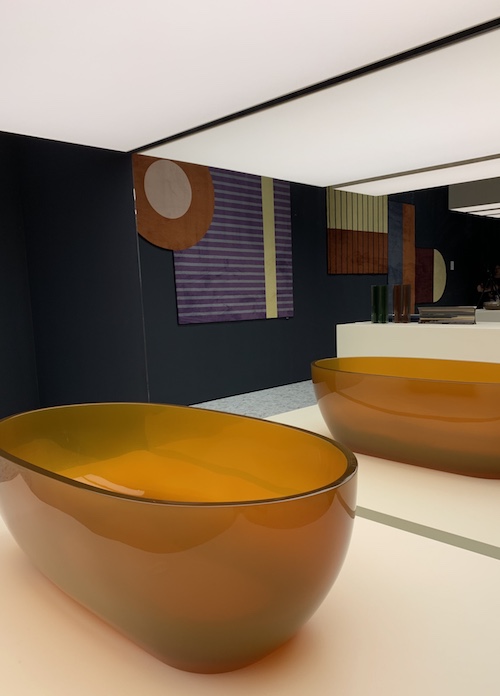
Cristalmood tub in Ambra
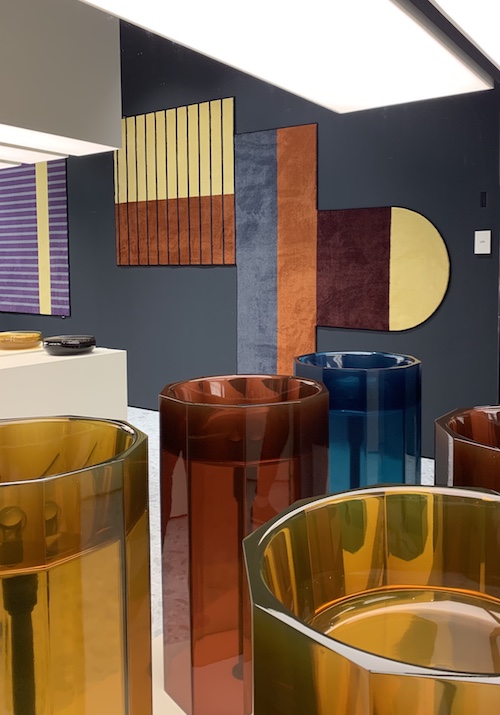
Cristalmood sink collection
Valcucine, Logica Celata
Italian kitchen makers are known worldwide for their design. But here I’d like to highlight on an another important aspect – their attention to detail, ergonomics and technology.
I couldn’t bring myself to leave the Valcucine kitchen show space – they transform cooking into a very modern and extraordinary experience: their smart, patented V-Motion system simplifies daily kitchen chores by activating various functions with a gesture of a hand and moving a recyclable glass-and-aluminum façade that hides all of the main kitchen fixtures.

Logica Celata kitchen

Logica Celata kitchen
Fantini
During Design Week I had an amazing opportunity to visit Fantini’s headquarters and showroom, designed by Lissoni Architecture. CEO Daniela Fantini was inspired by fascinating nature of Lake Orta to redesign the company’s factory and offices, and also create an adjacent hotel. The Offices and showroom are located along the lake, visually connecting with the surrounding nature through large glazed windows. One of the main tasks of the architects was to integrate the building into the surrounding environment, creating harmony between buildings and nature. Another important task was to transform a single 1957 building into a modern new office, while still maintaining the basic structure.
The boutique Casa Fantini Lake Time hotel was also designed by Lissoni Architectur. The stylistic philosophy of the company’a brand can be clearly seen in the design of this 11 suite hotel, where modern forms meet traditional elements.

Fantini’s headquarters

Fantini logo wall composition

Iconic I Balocchi faucet by Davide Mercatali and Paolo Pedrizzetti

Walkway from the entrance the lake





